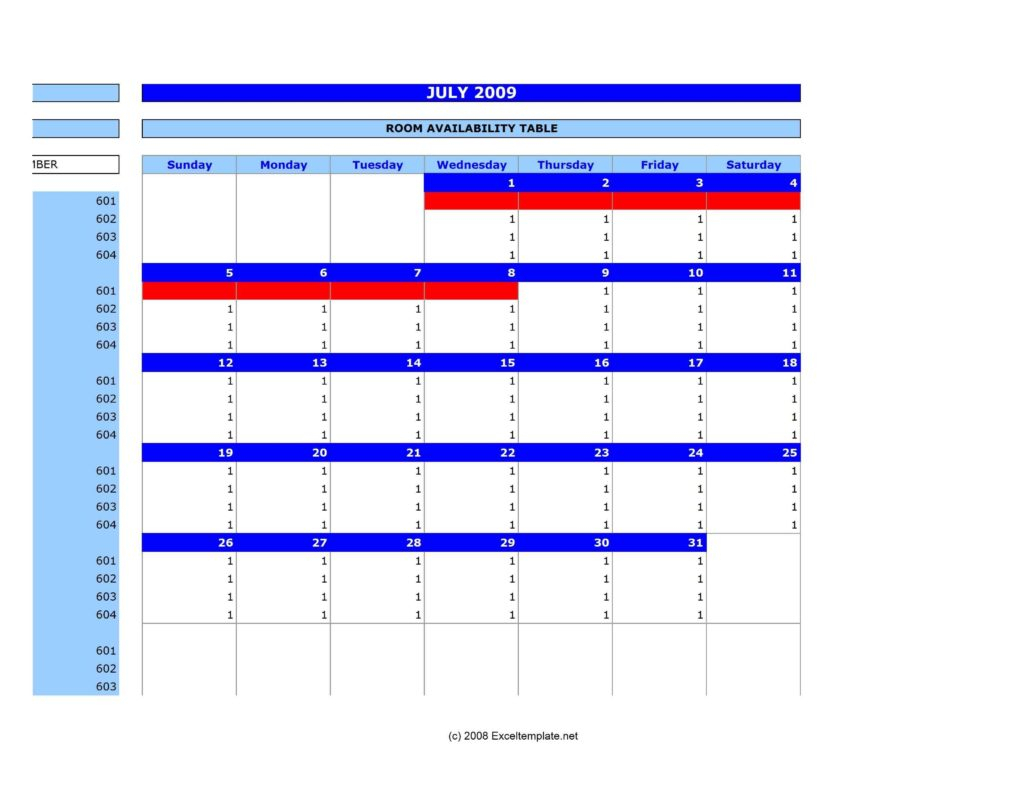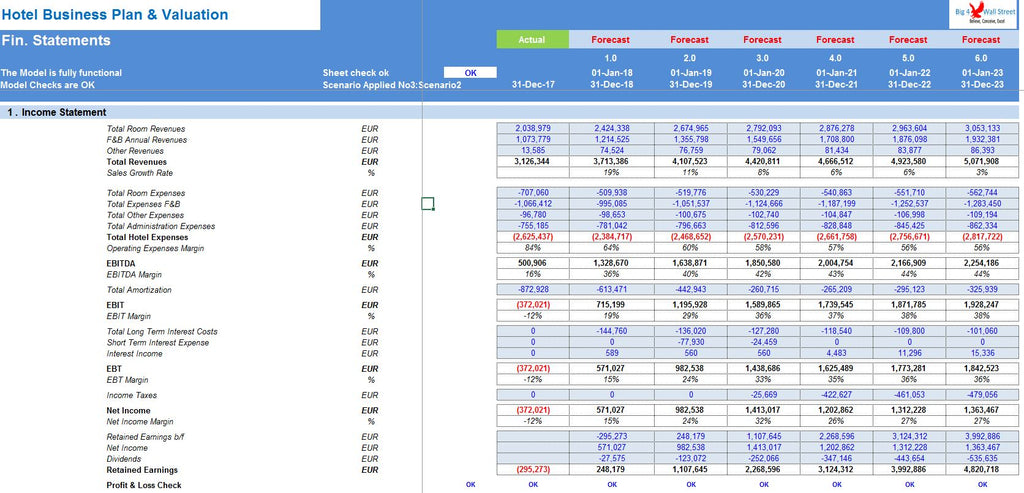

- #HOTEL ACCOUNTING IN EXCEL GUIDE HOW TO#
- #HOTEL ACCOUNTING IN EXCEL GUIDE SOFTWARE#
Your ITR should be between 4 and 8 - anything under or over means you need to fine-tune your purchasing.
 Regular inventory spot checks - use these two calculations – inventory turnover ratio (ITR) and days’ sales in inventory (DSI) – to get a sense of the overall health of your inventory. This way, you have an at-a-glance overview of inventory at every location (without doing daily counts)
Regular inventory spot checks - use these two calculations – inventory turnover ratio (ITR) and days’ sales in inventory (DSI) – to get a sense of the overall health of your inventory. This way, you have an at-a-glance overview of inventory at every location (without doing daily counts)  Daily records of all inventory actions - record every inventory action your staff makes (purchases, stock created in, transfers, breakage…). Carve out training time for all locations/employees. Once you iron out the kinks, introduce it operation-wide. Ask for employee feedback, implement it, and test again. Employee education and training - test out your new system at one location. When is the stock taken? How? Where is it recorded? How many people are involved in the process? Who needs to have access to the data? Follow this to the letter. Scalable stocktaking procedures - write down ALL the steps of your stocktaking procedure. This way, you won’t be carrying over mistakes from months ago and working with faulty data. Accurate counts - make sure that your opening stock counts are right from the get-go. It’s simple: regular stock counts are essential for food cost control in hotels. Here’s how you should set it up to plug those waste and pilferage holes: This is where a robust hotel F&B inventory control and management system comes into play. These ‘hidden’ costs eat into your profit margin so thoroughly that they can leave you operating in the red, especially during the low season. And more importantly, why would you? These are, after all, avoidable costs. Now, when your overarching goal is to keep your food costs to a minimum - and you have dozens of F&B locations to your name as a hotel chain F&B manager - can you afford to lose thousands of euros/pounds/dollars per day to waste and pilferage? When we simplify the math a bit, we get that waste + pilferage = $ 200 per restaurant/day. That translates to $ 112 of waste every day.Īdditionally, restaurant employees steal around $33,000-worth of goods annually from a single restaurant. Your average US-based restaurant has a food waste cost tag of approximately $ 41,000 per year. … because, if they don’t, they end up bleeding money. Smart Hotel F&B Managers Know Their Inventory Inside Out… Recommended reading: How Hotels are Benefiting from a Single Source of Truth for F&B Management What do you say - ready to kick those rising food costs to the curb? how hotel F&B managers (just like yourself) are benefiting from a single-source-of-truth platform that lets them control and minimise food costs across their F&B operations.
Daily records of all inventory actions - record every inventory action your staff makes (purchases, stock created in, transfers, breakage…). Carve out training time for all locations/employees. Once you iron out the kinks, introduce it operation-wide. Ask for employee feedback, implement it, and test again. Employee education and training - test out your new system at one location. When is the stock taken? How? Where is it recorded? How many people are involved in the process? Who needs to have access to the data? Follow this to the letter. Scalable stocktaking procedures - write down ALL the steps of your stocktaking procedure. This way, you won’t be carrying over mistakes from months ago and working with faulty data. Accurate counts - make sure that your opening stock counts are right from the get-go. It’s simple: regular stock counts are essential for food cost control in hotels. Here’s how you should set it up to plug those waste and pilferage holes: This is where a robust hotel F&B inventory control and management system comes into play. These ‘hidden’ costs eat into your profit margin so thoroughly that they can leave you operating in the red, especially during the low season. And more importantly, why would you? These are, after all, avoidable costs. Now, when your overarching goal is to keep your food costs to a minimum - and you have dozens of F&B locations to your name as a hotel chain F&B manager - can you afford to lose thousands of euros/pounds/dollars per day to waste and pilferage? When we simplify the math a bit, we get that waste + pilferage = $ 200 per restaurant/day. That translates to $ 112 of waste every day.Īdditionally, restaurant employees steal around $33,000-worth of goods annually from a single restaurant. Your average US-based restaurant has a food waste cost tag of approximately $ 41,000 per year. … because, if they don’t, they end up bleeding money. Smart Hotel F&B Managers Know Their Inventory Inside Out… Recommended reading: How Hotels are Benefiting from a Single Source of Truth for F&B Management What do you say - ready to kick those rising food costs to the curb? how hotel F&B managers (just like yourself) are benefiting from a single-source-of-truth platform that lets them control and minimise food costs across their F&B operations. #HOTEL ACCOUNTING IN EXCEL GUIDE HOW TO#
how to optimise your hotel’s F&B purchasing so that you’re only ordering what you need, when you need it (& with the right quality for the right price).why the make-it-or-break-it of your F&B operation depends on the first step of your inventory process (& how to make sure that you always get that right).Plus, it will provide you with actionable insights into your operations-like identifying who keeps ordering too many eggs for the breakfast buffet.Īfter reading this, you’ll walk away knowing:
#HOTEL ACCOUNTING IN EXCEL GUIDE SOFTWARE#
Still, the related costs are difficult to track (lots of many moving parts), making it difficult for employees to meet their targets when overseeing hotel procurement.Īdd supply chain issues, surging food prices and difficulties monitoring back of house activities (and staff) to that, and you understand why food cost percentage (and, staying in control of complex kitchen processes like procurement, inventory management and production) puts F&B professionals in the hotel industry in a difficult starting position.Įspecially if they are sent to battle armed with pen and paper.įYI, if you are still juggling Excel spreadsheets, know that an F&B management platform automates all of the above, no matter how many food outlets you run in your hotels.Īt the touch of a button, the restaurant procurement software will take care of your bill-of-materials, purchase orders and all of the numbers crunching. In this post, I’ll show you how a dedicated back of house platform - coupled with a sharp focus on your hotel’s inventory management & purchasing practices - will help you meet your food cost issues head-on.Īnd you will need that sharp focus because our opponent is a multi-headed beast.į&B is the second most important revenue centre in hospitality. Obviously, you say? Sure, the maths are easy: revenue – CoGS = bottom line.īut if you’ve ever been in the trenches of hotel F&B, you know this simple calculation, in reality, equals bloody guerrilla warfare against rising food cost percentages. Keeping tabs on food costs is essential for hotel profitability.







 0 kommentar(er)
0 kommentar(er)
